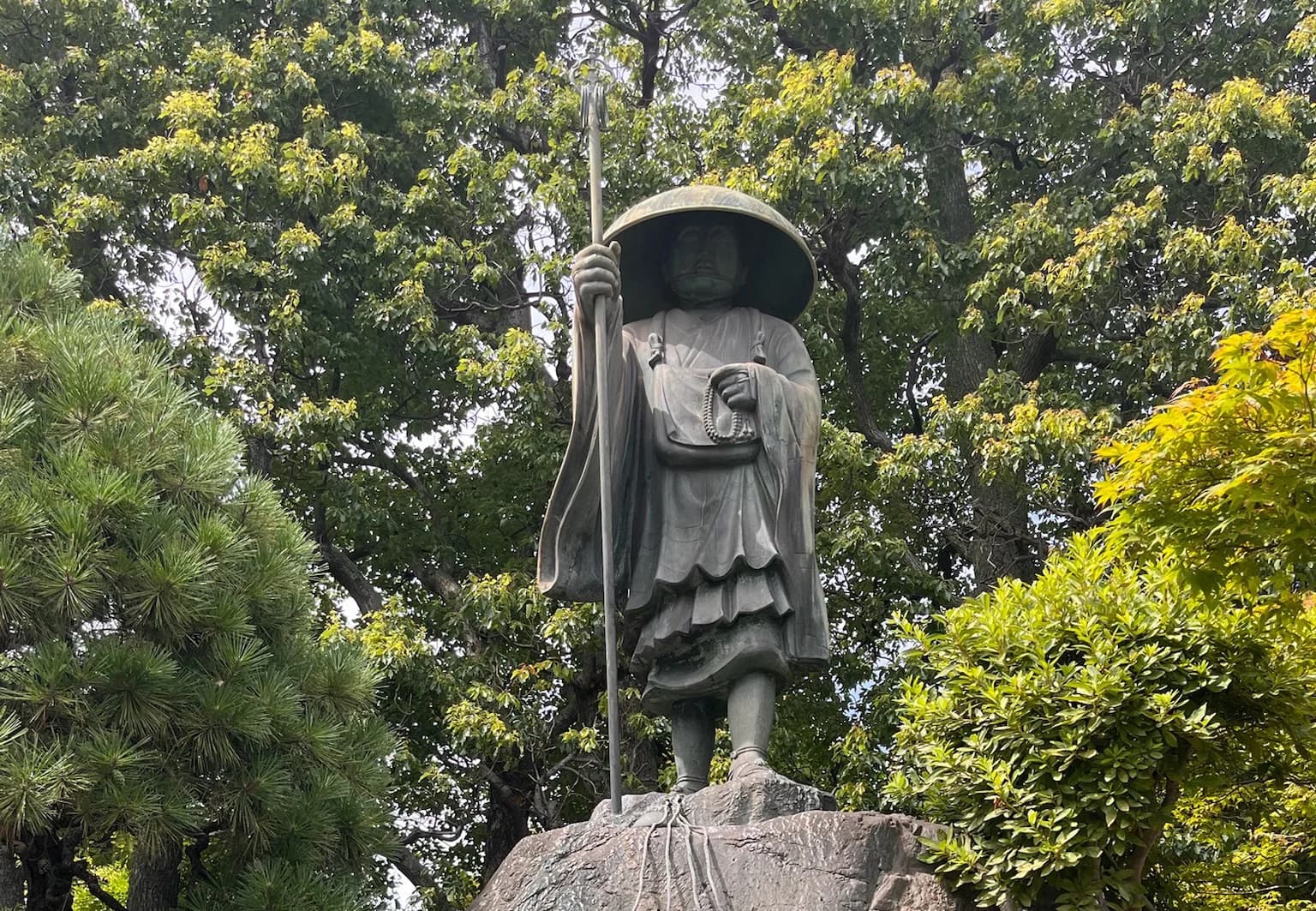
Kōbō Daishi
Kōbō Daishi (弘法大師), also known by his birth name Kūkai (空海), was a Japanese Buddhist monk, scholar, calligrapher, and visionary who lived from 774 to 835. He is one of the most revered figures in Japanese religious history and the founder of the Shingon school of Esoteric Buddhism.
Born in present-day Kagawa Prefecture, Kūkai was born into an aristocratic family and showed early promise in both spiritual and intellectual pursuits. In 804, he journeyed to Tang Dynasty China as part of an official Japanese mission. There, he studied Esoteric Buddhism under the great master Huiguo at Qinglong Temple and quickly received full transmission of the teachings. Upon his return to Japan in 806, he began to spread these teachings, eventually establishing the Shingon school.
Kōbō Daishi’s teachings focused on “sokushin jōbutsu” (即身成仏), the idea that one can attain Buddhahood in this very life and body. He emphasized mantra chanting, meditation, and ritual practice as paths to spiritual awakening. Central to his teachings was Dainichi Nyorai (the Cosmic Buddha), whose wisdom and presence are believed to permeate all existence.
In addition to his religious achievements, Kūkai contributed to Japanese culture and infrastructure. He founded a school open to all social classes and worked on public works projects such as irrigation systems. He was also a master calligrapher whose writing is still admired today.
In 816, he established the monastic center at Mount Kōya (Kōyasan), which remains the spiritual heart of Shingon Buddhism. After his passing in 835, Emperor Daigo granted him the posthumous title “Kōbō Daishi,” meaning “The Grand Master Who Spread the Dharma”. Followers believe that he did not die but instead entered a state of eternal meditation, continuing to watch over the world from his mausoleum at Okunoin, Mount Kōya.
To this day, Kōbō Daishi is venerated throughout Japan. Many temples are dedicated to his memory and teachings. Pilgrims also follow the Shikoku 88-temple pilgrimage route, believed to trace the steps of the great master himself.
Related topics
Last Updated:




